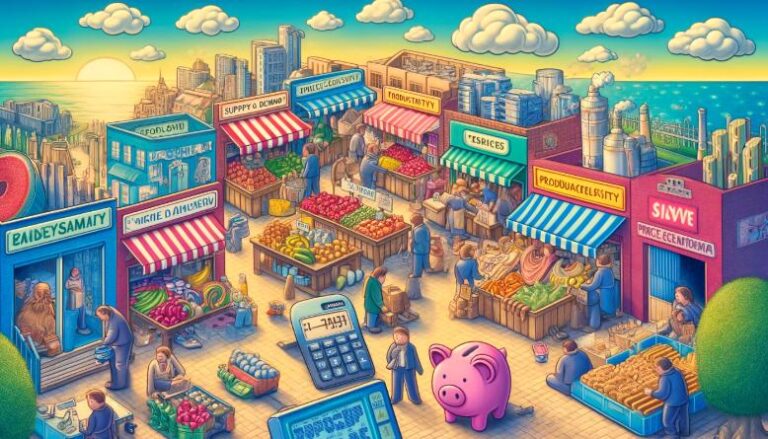IGCSE 0455 ECONOMICS
Unit 3 The Basic Economic Problem
What is IGCSE Microeconomics

READY FOR SOME IGCSE ECONOMICS?
IGCSE Economics Unit 1
The Basic Economic Problem
Cambridge 0455
IGCSE Economics Unit 2
Allocation of resources
Cambridge 0455
IGCSE Economics Unit 3
Microeconomics
Cambridge 0455
IGCSE Economics Unit 4
Macroeconomics
Cambridge 0455
IGCSE Economics Unit 5
Economic development
Cambridge 0455
IGCSE Economics Unit 6
International trade
Cambridge 0455
Why You’ll Love Unit 3 Microeconomics IGCSE
Just because your parents pay for things now, doesn’t mean they always will. One day, you’ll be making decisions about earning, spending, and saving. Will you earn a wage or a salary? Would you prefer the certainty of employment or the independence and decision-making power of being self-employed? These questions aren’t just theoretical—they’re at the heart of Unit 3: Microeconomics in the IGCSE Economics syllabus. This unit goes beyond theory, connecting classroom learning to real-world issues that impact your future earning potential, career choices, and financial decisions.
Unit 3 Microeconomics IGCSE is all about how individuals, businesses, and governments make choices with limited resources. This unit helps you explore fundamental economic principles like supply and demand, price elasticity, and the role of markets—all of which explain how goods and services are allocated. But more than that, it asks you to think critically about issues that shape the economy and your future.
For example, have you noticed rising prices on everyday essentials like food, fuel, and housing? This is where the concept of supply and demand comes in. From global supply chain disruptions to shifts in consumer preferences, these forces directly impact prices. Understanding supply and demand is more than just learning a graph; it’s the key to spotting opportunities in fast-growing industries. Want a career with high demand and good wages? Look to sectors like renewable energy, healthcare, or AI—areas where jobs are increasing as businesses shift their focus to new challenges.
One of the most practical parts of Unit 3 Microeconomics IGCSE is learning about price elasticity of demand (PED). Have you ever wondered why luxury brands like Gucci can raise their prices without losing customers, while supermarkets compete to offer the lowest prices on everyday goods? That’s PED in action. Businesses analyze elasticity to determine pricing strategies, and you can use the same principle to identify industries with stable demand—think essential services like education or utilities, which are relatively price inelastic. This knowledge can influence your career path by showing you which sectors are more resilient during economic downturns.
Microeconomics also covers wage determination and labor markets. Imagine debating whether minimum wages should increase, an issue that’s been hotly discussed in recent years. For example, Amazon’s decision to raise its minimum wage to $15 an hour in the United States sparked widespread discussion on workers’ rights, income inequality, and the role of corporations. In this unit, you’ll learn how wages are determined based on supply and demand for labor, skill levels, and productivity. This understanding will help you weigh the trade-offs between pursuing a high-paying but specialized career and a more flexible but potentially lower-paid job.
Another key concept is opportunity cost—the choices you make when resources are limited. Think about it: should you spend your time on further education to boost your earning potential, or start working immediately to gain experience? Governments face similar decisions when allocating resources to public services like healthcare, education, or infrastructure. In Unit 3, you’ll see how opportunity cost shapes decisions at every level, from personal finance to national budgets.
A fascinating section of this unit is the exploration of market structures—perfect competition, monopolies, and everything in between. Have you noticed how tech giants like Google and Amazon dominate their markets? Governments are now stepping in to regulate monopolistic behavior and encourage competition, a real-world issue with far-reaching consequences. For example, the European Union recently fined Google over its advertising practices, highlighting how monopolies affect innovation, pricing, and consumer choice. This case connects directly to your IGCSE Microeconomics revision, offering insights into how these market structures impact businesses and workers alike.
Lastly, externalities—the unintended side effects of economic activities—bring ethics into economics. From pollution caused by fast fashion to the global shift toward green energy, externalities show the hidden costs and benefits of production and consumption. Countries worldwide are setting ambitious climate targets, creating demand for “green jobs” in renewable energy and environmental engineering. Understanding externalities will help you identify careers that align with both earning potential and sustainability.
Whether you’re preparing for exams, looking for IGCSE revision tips, or exploring how microeconomics affects your future, Unit 3 Microeconomics IGCSE brings economics to life. It’s not just about memorizing definitions—it’s about connecting theory to the real world. Want to succeed in IGCSE Economics Unit 3? Dive into the fascinating balance between scarcity, choices, and their consequences. By mastering these concepts, you’ll gain skills that don’t just prepare you for exams—they’ll prepare you for life.



